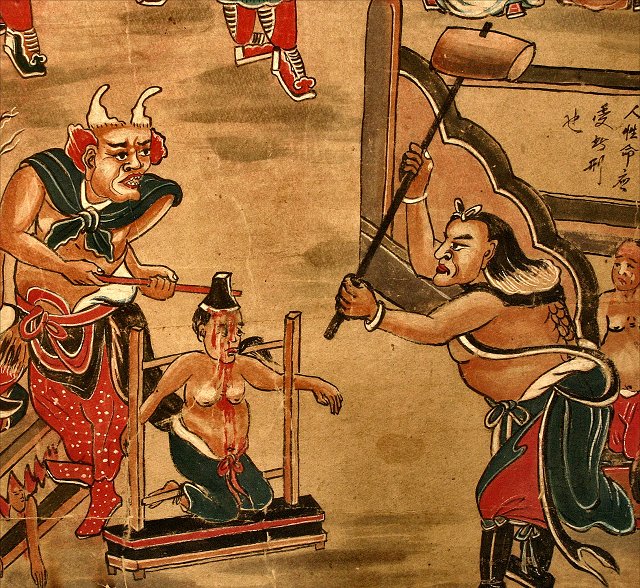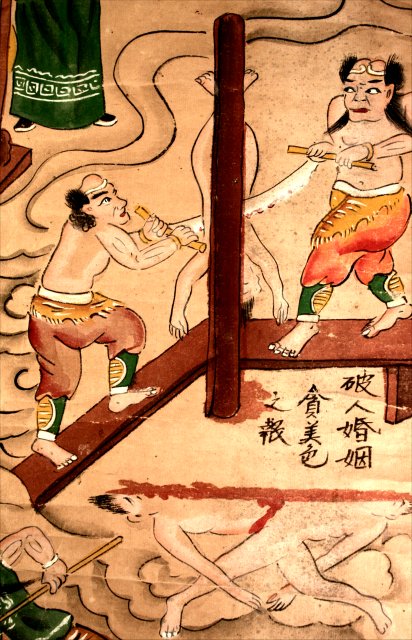
Translation
Recompense for breaking up a marriage out of lust for beauty and sex.
No doubt many viewers of these scrolls will recall the horrors of Dante's "Inferno," and Dante's description of vertical rending is indeed a good example of overlap in afterlife torture. As the protagonist enters the Ninth Pouch of the Eighth Circle, he encounters the sowers of schism, and here in Allen Mandelbaum's translation, his graphic description of their punishment echoes these paintings:
No barrel, even though it's lost a hoop
or end-piece, ever gapes as one whom I
saw ripped right from his chin to where we fart:
his bowels hung between his legs, one saw
his vitals and the miserable sack
that makes of what we swallow excrement.
While I was all intent on watching him,
he looked at me, and with his hands he spread
his chest and said: "See how I split myself!
...And all the others here whom you can see
were, when alive, the sowers of dissension
and scandal, and for this they now are split.
Behind us here, a devil decks us out
so cruelly, re-placing every one
of this throng underneath the sword edge when
we've made our way around the road of pain
because our wounds have closed again before
we have returned to meet his blade once more.
Here the torture is tailored to the crime, and just as in descriptions of Chinese Buddhist hell, the sinners quickly heal only to suffer the torture again and again.
Thus the idea of an organized, torturous hell is more universal, but interestingly there is a remote chance of historical links between the two as well. Dante is said to have acquired much of his imagery via his knowledge of the Islamic tradition which in turn is informed by the earlier Zoroastrian tradition. Early and medieval religions circulating Central Asia may have had some influence on their neighboring idea systems, the overlaps between the Chinese visions of hell and that of the Manichaean tradition to be discussed in the materials appended to the seventh scroll. That is, there may be ancient Zoroastrian or Manichaean bridges between these traditions, but such links are merely speculative. Even so, some of the particular tools of hell common to the Islamic, Zoroastrian and Chinese traditions such as the weighing scales and the ever-narrowing bridge from which sinners fall (the sirat over Gehenna in Islam or the Bridge of the Accumulator in Zoroastrianism) give one pause to consider whether these are universal images or historically linked.

A second example of vertical rending from another hell scroll (D). When given its own name, this place is often referred to as the "Hell of cutting and sawing."
Lu Xun in his story "New Year's Sacrifice" describes a poor woman twice married and surviving both her husbands. As an old woman of the village chides her, "Just think: when you go down to the lower world, the ghosts of both men will start fighting over you. Which ought to have you? The King of Hell will have to saw you into two and divide you beween them." (Trans. Yang Xianyi and Gladys Yang.)
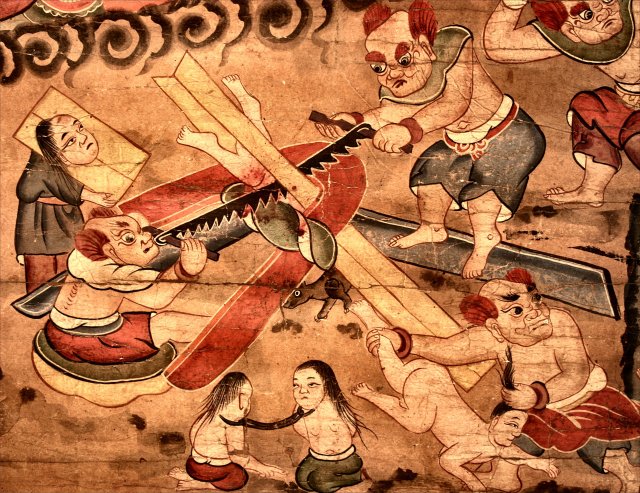

A third example of vertical rending from a later hell scroll (B8).
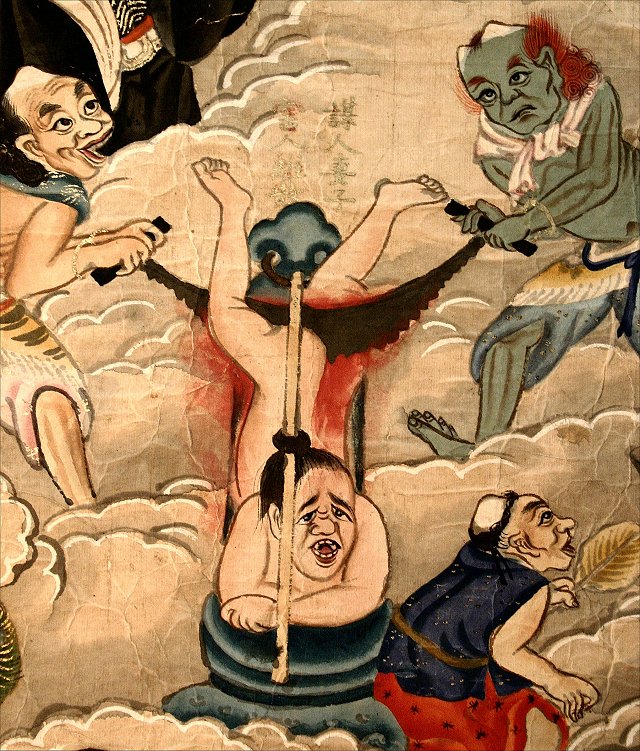
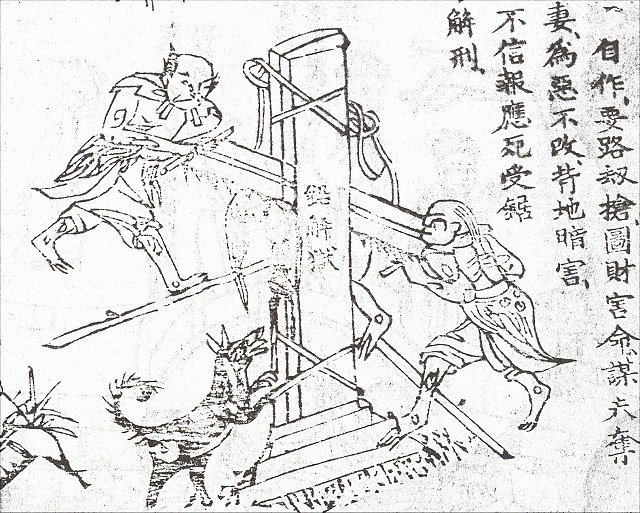
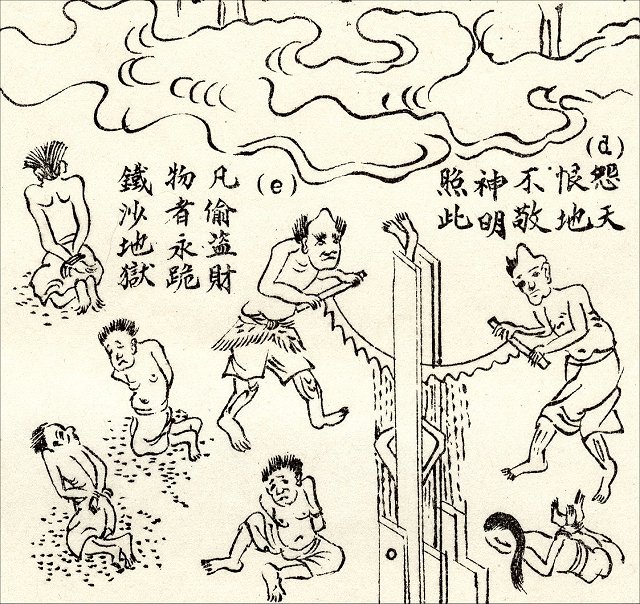

Vertical rending as depicted at Fengdu, the City of Ghosts.
